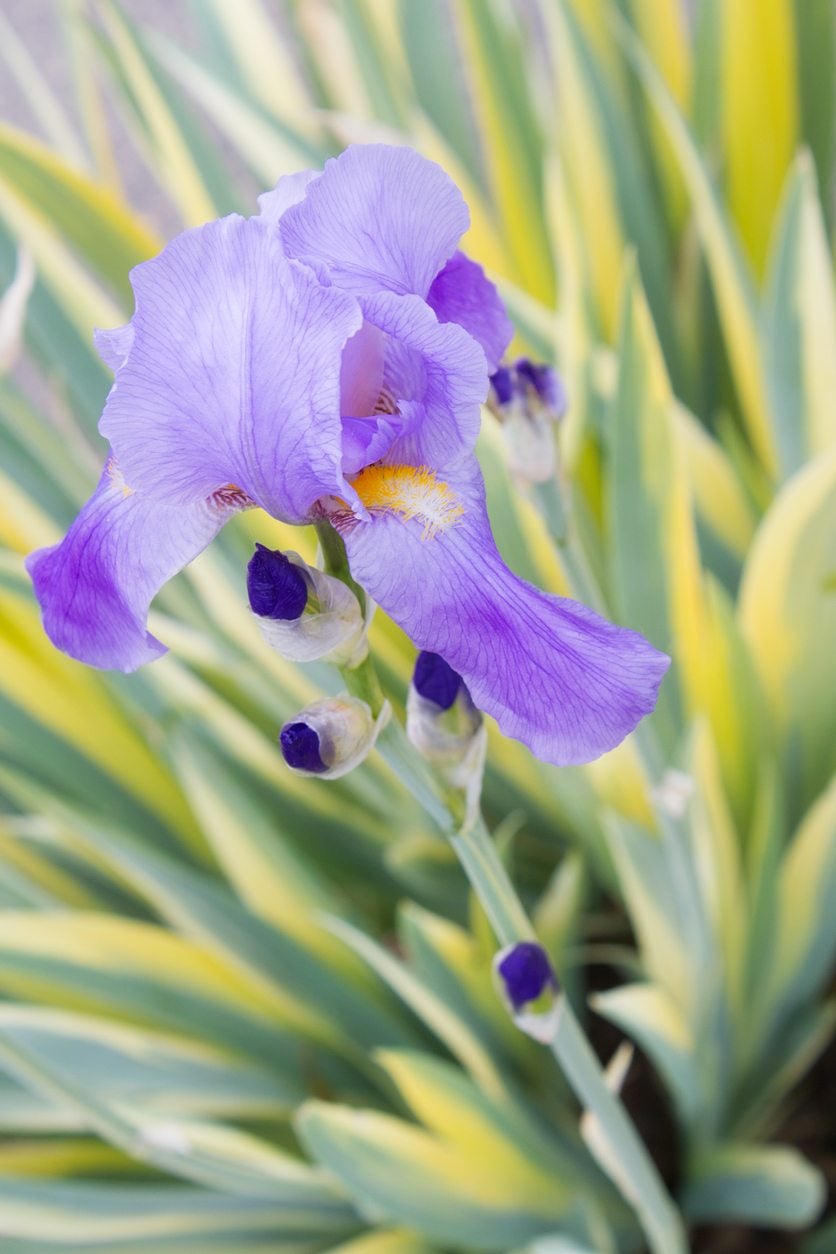Sweet Iris Care: Growing A Variegated Sweet Iris Plant


Also known as zebra iris, sweet flag iris, and dalmatian iris, variegated sweet iris is a perennial in the bearded iris family with sweet, scented blooms. Sweet irises (Iris pallida 'Variegata') are often referred to as variegated iris or zebra iris plants because of their dramatic vertical stripping of gold, cream, white, and bluish green foliage. It gets its other common name of dalmatian iris because it is native to Europe, specifically the Southern Alps and Dalmatia. Continue reading to learn about sweet iris care and growing variegated sweet iris.
Growing a Variegated Sweet Iris Plant
The 2 to 3 foot (61-91 cm.) tall, sword-like, variegated foliage of sweet flag iris plants add interest to any garden style, even when the plant is not in bloom. Its lavender blue colored flowers bloom in late spring to early summer and its sweet fragrance attracts many pollinators. However, it is not just a beautiful ornamental plant. Orris root powder and orris oil are made from the rhizomes of zebra iris plants and are used in many herbal medicines and natural beauty products. Like most irises, sweet iris is seldom bothered by deer or rabbits and can be drought tolerant once established. Sweet iris is also more resistant to diseases and iris borers than other varieties. Still, it is wise to regularly inspect their rhizomes for borer damage.
Sweet Iris Care
Hardy in zones 4 to 9, sweet iris grows best in full sun to part shade locations with rich, moist but well-draining soil. Well-draining soil is essential, as wet feet can cause rot. Adding a little sand to the soil in the planting area can help it to drain properly. When planting irises, it is important to leave the tops of the rhizomes slightly sticking up from the soil level. Planting too deeply can also lead to rot and fungal diseases. While more shade tolerant than most other irises, sweet iris will bloom best in full sun. Zebra iris plants should be divided every two to four years to keep them healthy and blooming properly. Dividing should be done from late summer to autumn. When first planting or dividing iris plants, do not use a fertilizer that contains nitrogen. Otherwise, you should feed irises with a general-purpose fertilizer only three times a year-- in spring just as the foliage pops up, again right after its May through June blooming period, then again in fall to give the plant added stores of nutrients for the winter months.
Gardening tips, videos, info and more delivered right to your inbox!
Sign up for the Gardening Know How newsletter today and receive a free copy of our e-book "How to Grow Delicious Tomatoes".
-
 Create A Romantic Garden Straight Out Of Bridgerton: Regency Era Romance In Your Garden
Create A Romantic Garden Straight Out Of Bridgerton: Regency Era Romance In Your GardenTry some romantic garden ideas straight out of Bridgerton. Flowers and gardens in the Regency era were lush and charming and you can get the same look!
By Bonnie L. Grant
-
 Moody Blooms For Spring: 8 Types Of Black Flowers To Add Drama To Spring Displays
Moody Blooms For Spring: 8 Types Of Black Flowers To Add Drama To Spring DisplaysFrom midnight burgundies to inky violets, several types of black flowers can enrich and embolden a spring display. Try these brooding bloomers for a moody garden
By Tonya Barnett